SLAC's First Director
Wolfgang K.H. Panofsky
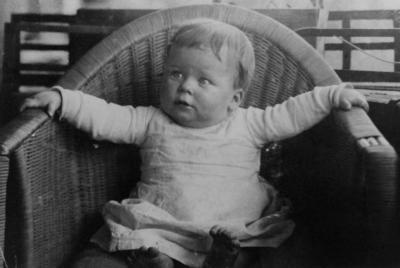
Wolfgang K. H. Panofsky, known affectionately to most as “Pief,” was born in Berlin in 1919. He passed away on September 24, 2007 in his home in Los Altos, California.
Dr. Panofsky spent much of his early life in Hamburg. His parents, Dorothea Mosse and Erwin Pankofsky, were noted art historians. When Pief was 15, the Panofsky family moved to the United States. There, he entered Princeton University and went on to the California Institute of Technology, where he completed his Ph.D. in 1942.
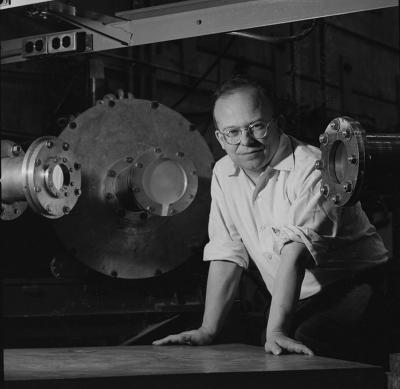
A remarkable career spanning research, machine-building, and research administration. The Panofsky Fellowship pays tribute to his groundbreaking career.
Panofsky’s life and the breadth of his career are truly remarkable. One cannot escape the profound impact that he has had on the field of elementary particle physics as variously a researcher, a machine-builder, and a research administrator.
In parallel with his science career, Panofsky avidly pursued two other interests of equal historical significance. Arms control and international security policy became a lifelong passion of his, and played out time and again in Washington, D.C., as he assumed the role of a respected high-level government advisor. At the same time, he fought to shape the science policies of our government by improving international collaboration and maintaining the free flow of knowledge across international boundaries at a time when the world had become ideologically polarized.
Lured by Luis Alvarez (whom he knew through the Manhattan Project), and the ongoing work at Berkeley's Radiation Laboratory to build a proton linear accelerator, Panofsky accepted a research assistantship there in 1945. His position turned into an assistant professorship just a year later, and for the next five years, he immersed himself in research and teaching at Berkeley. Particle physics as we think of it today, was still in its infancy. Panofsky remained actively involved in developing and exploiting the earliest tools of the particle physicist: the cyclotrons, the synchrotrons and the linacs. He was known for his early textbook experiments on g-ray absorption in hydrogen and deuterium that measured the pion parity, and his measurement of the individual pion masses. In collaboration with Jack Steinberger, the electroproduction and decay of the p0 → gg was first observed. He also published work on hadroproduction of pions, and on low-energy proton-proton scattering.
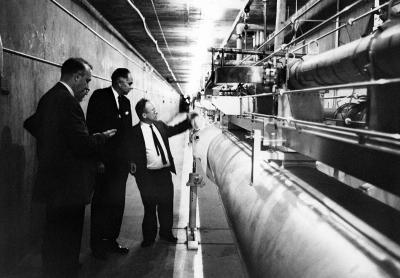
SLAC's First Director
In 1951 Panofsky turned down offers from Columbia, Princeton and Harvard, choosing instead to stay in California and join the Stanford faculty. At Stanford, Panofsky focused on teaching and work on improving the Mark III linear accelerator which had come into limited operation in 1951. In collaboration with Edward Ginzton, he completed the Mark III upgrades towards the end of 1953, allowing the start of a series of landmark experiments using its ~0.5 GeV beam and research facilities; one of these experiments would earn Robert Hofstadter the 1961 Nobel Prize in Physics.
The scientific need for a significantly larger and higher energy machine had been articulated within the Stanford department for almost a decade — starting with William Hansen — when in the spring of 1956 Panofsky, Ginzton, and others gathered to more formally discuss the next generation linear accelerator. Panofsky assumed project leadership in 1960 when Ginzton left Stanford. With immense foresight and courage, they had proposed and fought what was to be a five-year-long battle to construct a two mile long electron linear accelerator; an enormous and costly undertaking for the Atomic Energy Commission in the early 1960’s. Panofsky's pioneering vision of the scientific power and reach of high energy electron beams was not fully shared in the broader physics community at the time. However, his relentless effort ultimately led to the authorization of SLAC by the U.S. Congress in 1961. With the groundbreaking in 1962, a unique laboratory came into existence — one that history would show to rank amongst the most productive research facilities ever constructed.
Founding Director
Role in Building SLAC
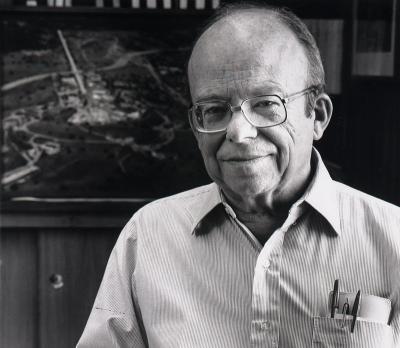
As the first Director of SLAC, Panofsky went on to press the case for basic accelerator research, the upgrading of the linac energy and the construction of new high-energy physics facilities such as the SPEAR and PEP-I storage rings. With great vision, he promoted the use of SPEAR as one of the earliest synchrotron light sources, helping to launch yet another branch of basic science. The research conducted at SLAC has led to many new discoveries and insights into the fundamental nature of matter. Amongst many important experiments conducted over two decades, three Nobel prizes emerged from the fundamental forefront research that Panofsky promoted during his tenure as Director. Before stepping down in 1984, Panofsky saw the start of yet another upgrade of his linac and its metamorphosis into a prototype for a linear collider, the technology that would be used as the basis for the next generation of high energy electron/positron colliders.
Panofsky’s role in the Manhattan Project and the development of the atomic bomb during the Second World War profoundly influenced his thinking on the ethical and social responsibilities of the scientist. Throughout his brilliant career as a particle physicist, he continued to play an active and tireless role as an advisor to the US government on vital issues of arms control and international security. From the Eisenhower to the Carter years, Panofsky influenced the presidents and senior members of their administrations. Notable was his role in the Cold War, in helping to secure the Atmospheric Test Ban Treaty during Kennedy's administration and the Anti-Ballistic Missile Treaty of 1972. In later years at Stanford University, Panofsky helped to found the Center for International Security and Arms Control.
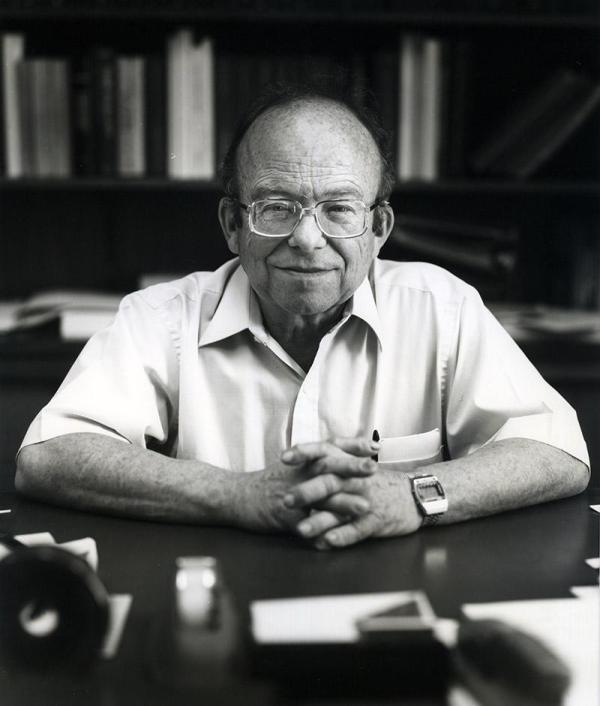
Panofsky is also widely recognized for his lifelong commitment to developing our government’s science policies. He encouraged and promoted the importance of international collaboration and open scientific exchange across borders that for decades were otherwise divided by politicians and generals. Panofsky cemented SLAC’s ties to foreign laboratories in the former Soviet Union and the People's Republic of China through direct scientific exchange and collaboration with SLAC. He helped bring these nations into the open — worldwide science community by his policies.
The awards and citations that Panofsky has received over his life reflect the depth and breadth of his accomplishments and the influence that he has had on the world. They also reflect the great respect that he has garnered from many very different communities.
The Panofsky Fellowship
In 1989 the Faculty of SLAC created the Wolfgang Panofsky Fellowship to honor his accomplishments, encourage others, and promote the careers of those young scientists with similar characteristics.
The Panofsky Fellowship promises possibility and funding for those who might follow in his footsteps.
Biography adapted from:
- In the Shadow of the Bomb: Physics and Arms Control, S. D. Drell, 1993. Pub. by the American Inst. of Physics, N.Y.
- "Biography of W.K.H. Panofsky," by Roxanne Nilan, 1991, Unpublished manuscript: (SLAC Archives)

